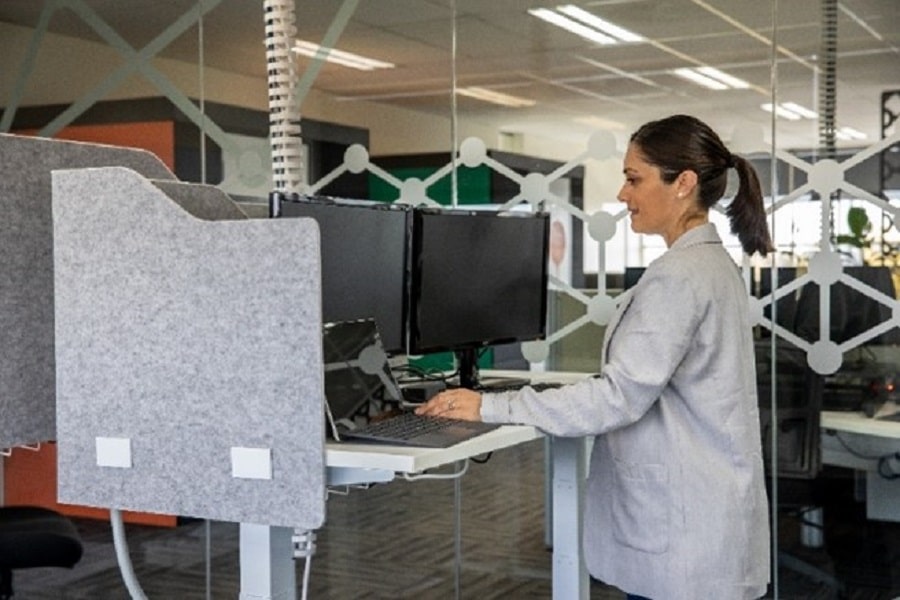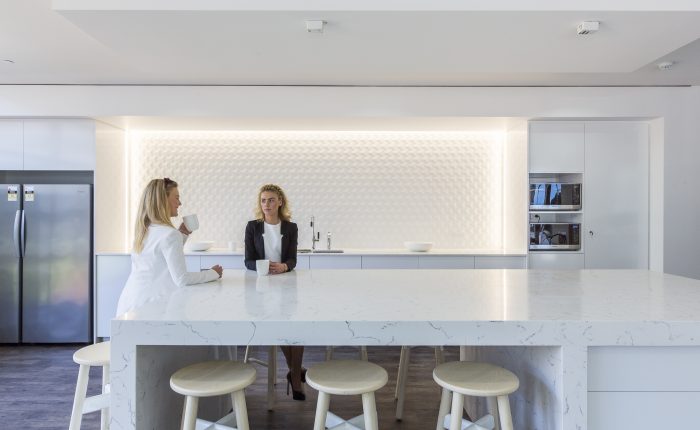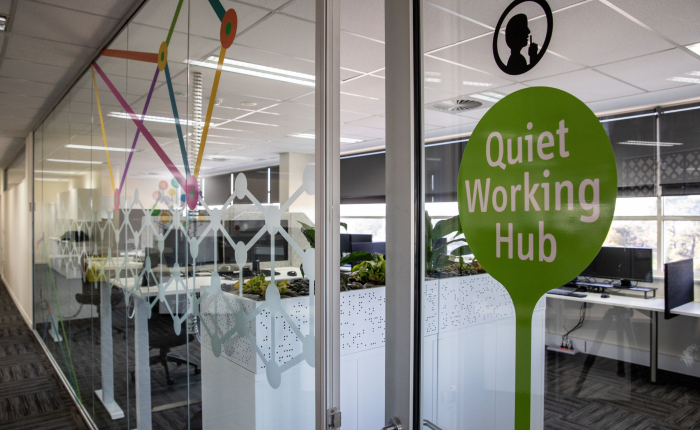Ergonomics: “The science of refining the design of products to optimise them for human use”.
Design has a significant impact on health, wellbeing, occupational safety and welfare of both staff and visitors. We need to design ergonomically for the variety of body structures that are evident in our society.
While it is impossible to design office spaces that will be 100% comfortable for all people, we can improve spaces.
Seated and computers have become the norm for workspaces and therefore there have been an increase in work-related musculoskeletal disorders and compensation claims. That’s why we should be adapting the workplace to fit the person instead of forcing the employee to adapt to the workplace.
Components to a good ergonomic seated position:
1. Feet:
Flat on the floor or on a footrest, resting comfortably with a straight back.
2. Chair:
Lumbar support, seat height with legs at 90–120-degree angle, elbows at 90-degree angle with forearms resting on the desk, shoulders relaxed, knees in line with hips.
3. Monitor:
Top of the screen to be positioned at eye level height, arm length distance away from the face, perpendicular to your eye gaze, rest your eye muscles by looking into the distance every 10 minutes to give your eyes a break.
4. Desk:
Forearms at 90-degree angle with wrists straight, frequently used items should be within arm’s reach, matte surface finish will help to minimise the glare.
5. Keyboard and Mouse:
Elbows close to the body, keyboard aligned with monitor, directly in front of your body, wrist in resting position over the mouse, the mouse is to be alongside the keyboard, the weight of arm to be supported by the desk.
6. Timing:
We meet timeframes and often exceed our client’s expectations when delivering. Our timelines are developed right and agreed to right at the beginning, so you can be assured our team is striving to deliver to your timeline, at all times.
7. Posture:
Change your posture to minimise fatigue.
8. Breaks:
Take short, frequent breaks and do a range of tasks throughout the day.
9. Stretch:
Stretch several times a day; your neck, shoulders, wrists and back to increase body movement.
What you can do as an Employer:
- Employers need to evaluate each employee, their tasks, needs and working conditions to analyse the kind of work environment suited to them.
- Task analysis, workstation analysis, environmental analysis and organisation analysis are all qualities that need to be assessed and addressed.
- Current trends for adaptable workplaces and easily moveable furniture are giving employees options on where to sit (Activity Based Workplace Design).
- Adjustable monitor arms, chairs, desks and the like are being used as immediate solutions to allow each space to be tailored to the individual.



